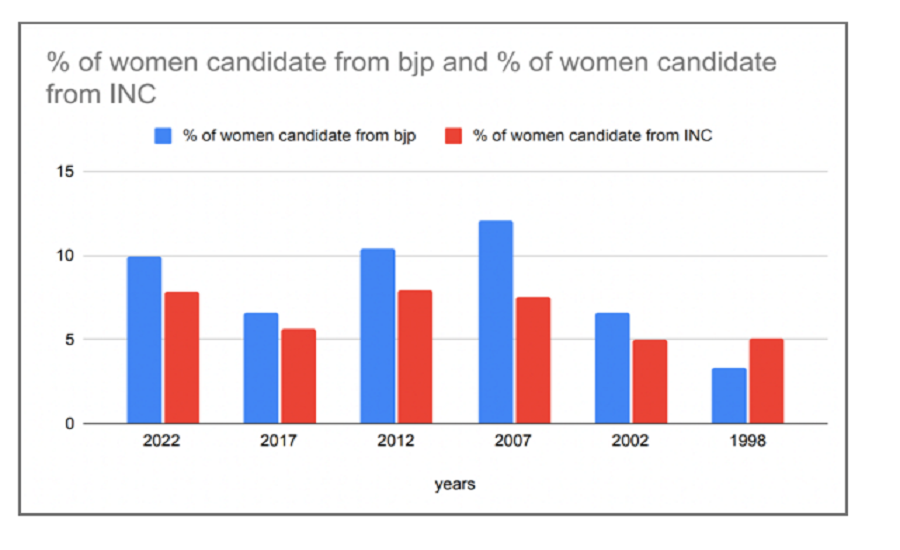In the last 25 years and five assembly elections, there has been an increase of only 6 per cent in the number of women MLAs in the state: Data
Shibra | Clarion India
AHMEDABAD — The westernmost state of India, Gujarat, is holding its first phase of the 15th Legislative Assembly elections Today, December 1, 2022. As per the data released by the Election Commission of India (ECI), 78 of the 788 candidates contesting in the first phase of the assembly elections are women.
Unsurprisingly, only 139 women candidates are in the fray out of a total of 1,621 contestants for the Gujarat assembly polls 2022. This is the highest number of female candidates contesting the state elections till date.
An analysis of the Election Commission’s data shows that in the last five assembly elections, participation of women was high. In 1998, 77 lakh women cast their votes, which was 45.13 per cent of the total votes cast; in 2017, the number of women voters increased by 1.38 crore, which was 46.33 per cent share of the total votes. But the percentage of women’s candidature and their victory is comparatively very less, whether it is compared to the voting share of women, or the representation and victory of male candidates.
The Gujarat Assembly has 182 seats. The year 1998 witnessed the candidature of 1,125 contestants that included only 49 women. This year, the assembly welcomed 178 men and only four women as members of the House, the participation of women in candidature was 4.35 per cent and the winning rate was just at 2.19 per cent.
Year after year, there has been a continuous increase in women’s candidature and their participation in the Vidhan Sabha. It can only be seen as an increase, not a change. In 2002, 2007, 2012, 2017, the number of women representatives and MLAs was 37, 88, 97, 126 and 12, 16, 16, 13 respectively. It shows that in 2002, fewer women were in the fray than in 1998 and in 2017 three women legislators were elected less than in 2012 and 2007.
According to the data of the ECI, between the years 1998 and 2017, women voters increased by 60.97 per cent, while in the same time period, the number of women contestants increased by 77 and the number of women who won the elections increased by only nine.
The Column Graph given below shows the difference in women’s vote share, representation and victory.

What do stats say about women candidates of national parties?
The Bhartiya Janta Party (BJP) and the Indian National Congress (INC) are the two major political players in Gujarat. The BJP has been fielding candidates on all 182 seats of the Gujarat assembly whereas Congress has not gone for the poll on all of 182 seats yet. Congress fielded candidates for the highest 180 seats in 2002 and the lowest 173 seats in 2007. In 1998, the BJP included only 6 women candidates out of 182 and Congress trusted only 9 women out of the 179 candidates. In 2007 BJP had the highest number of women candidates with just 22 numbers and the Congress with 14 women candidates in 2012.
The current year BJP has fielded only 18 women while the Congress has shown confidence in just 14 women candidates. Both parties have continued their tradition of giving tickets to only a handful of women, though the number of such candidates by these parties this time is more than in the 2017 election Both of the political organizations have not crossed the mark of 10 per cent in terms of offering tickets to women candidates The data of BJP for the year 2007 is an exception, that year BJP presented 22 women candidates out of 182 i.e., 12.08 per cent. This year women’s candidature is the highest ever with 139 women candidates out of 1621 candidates.


